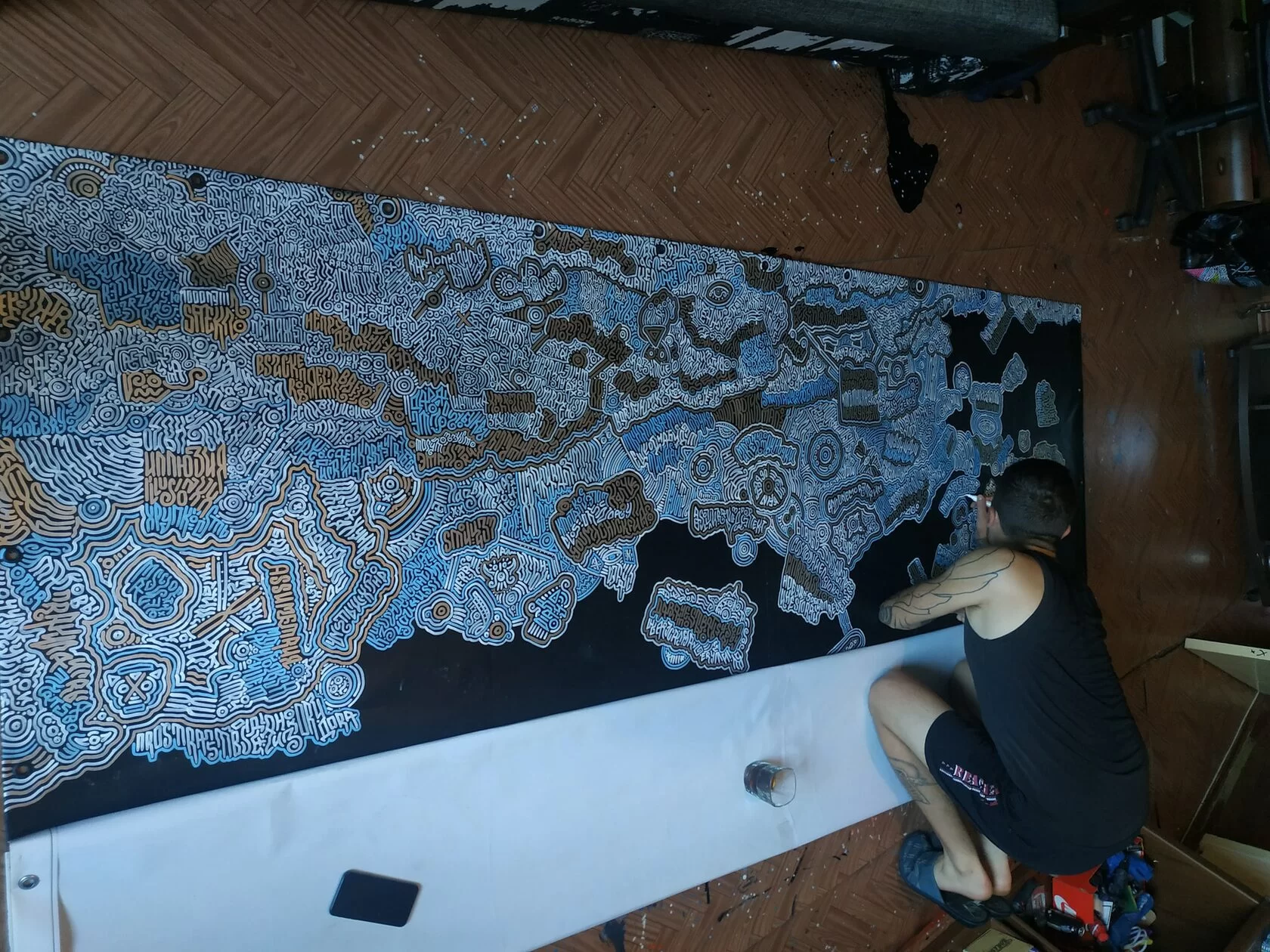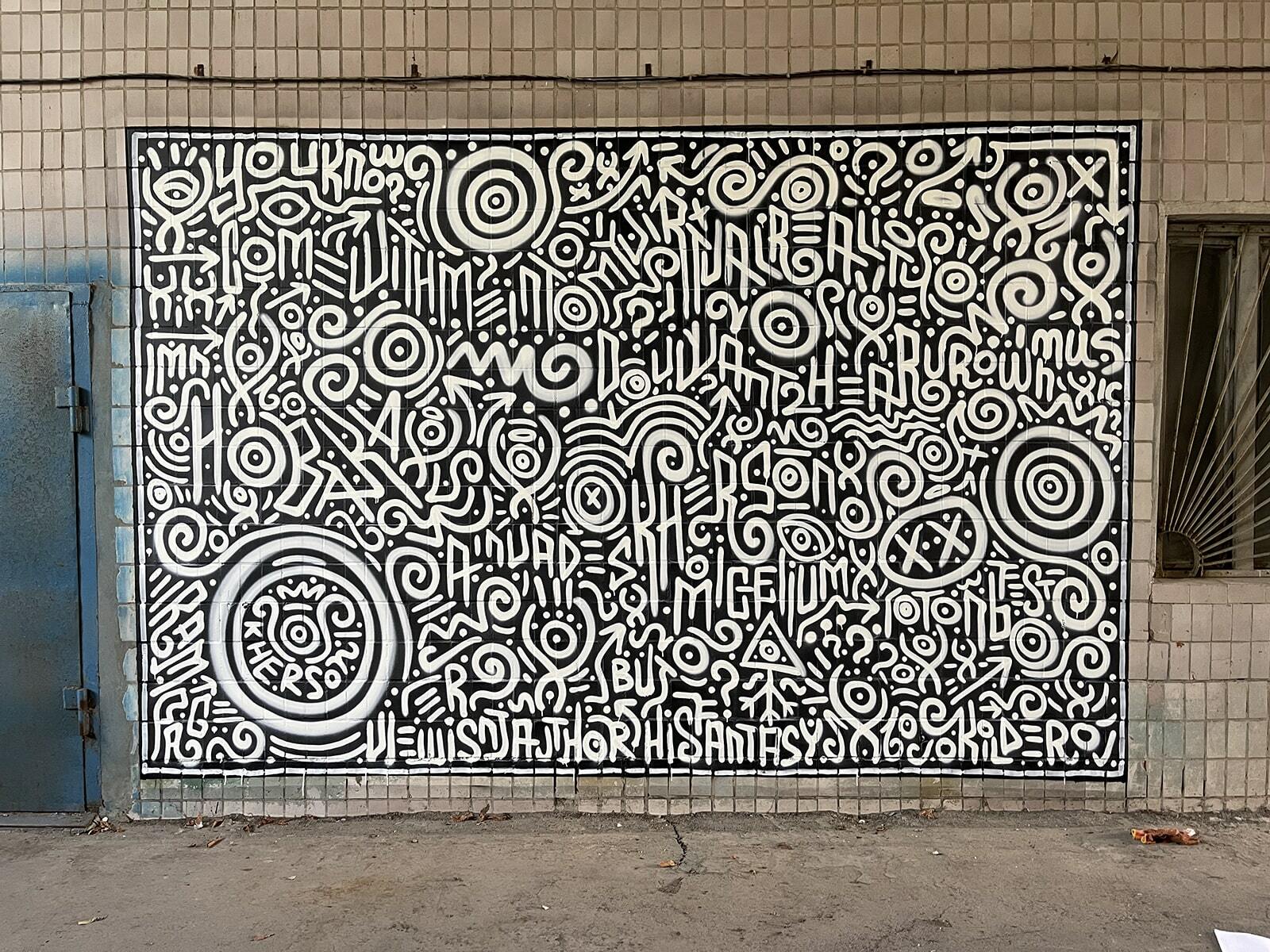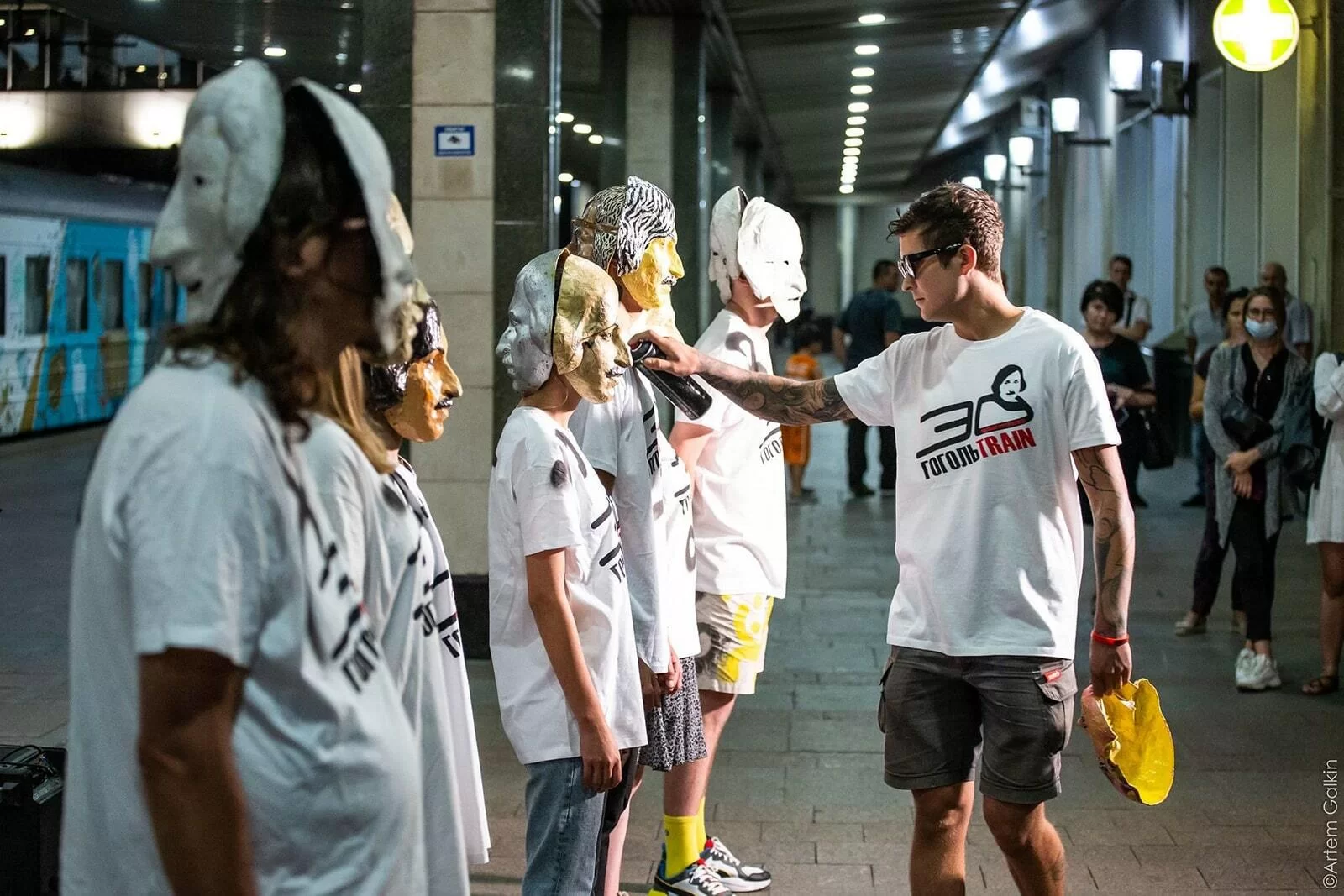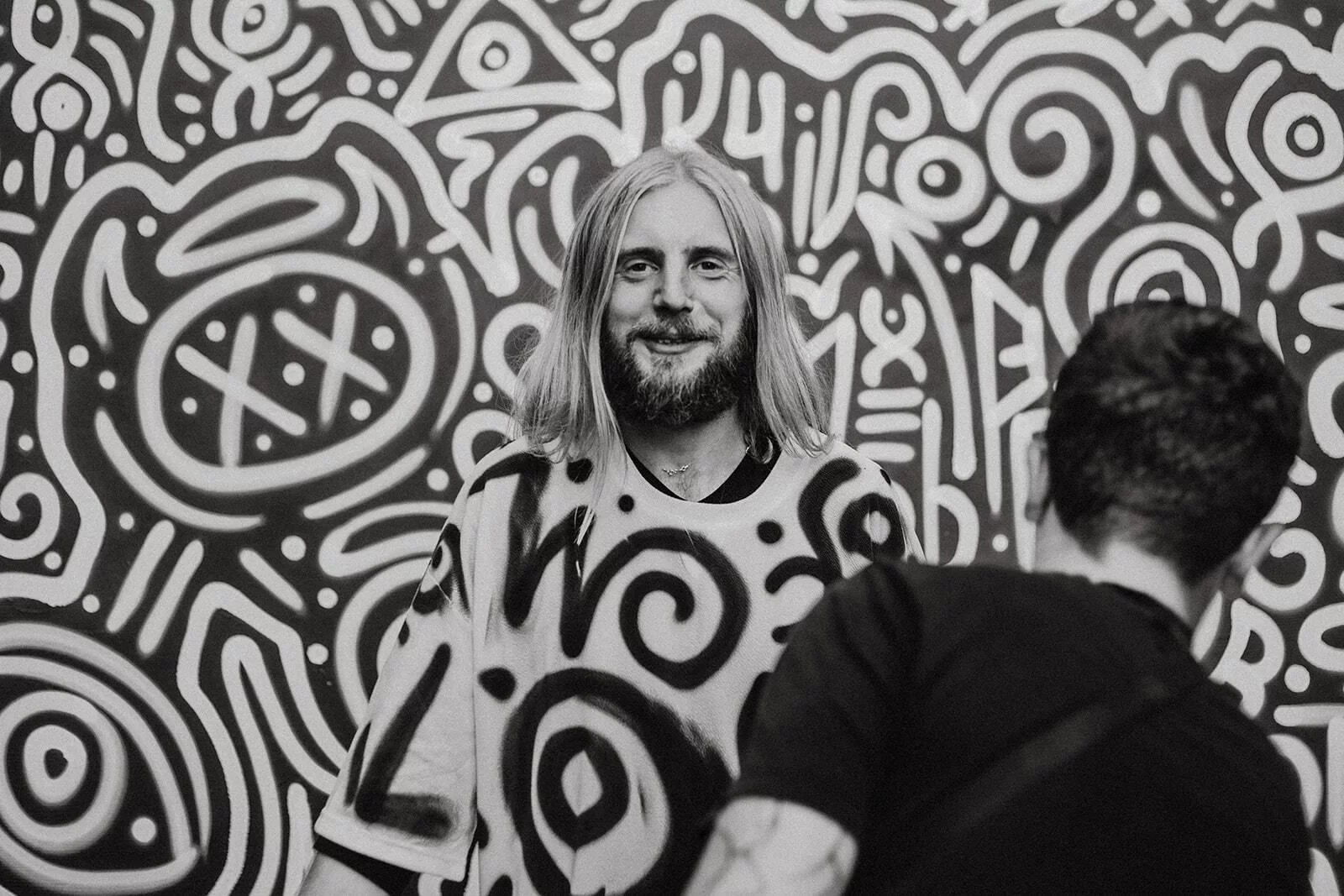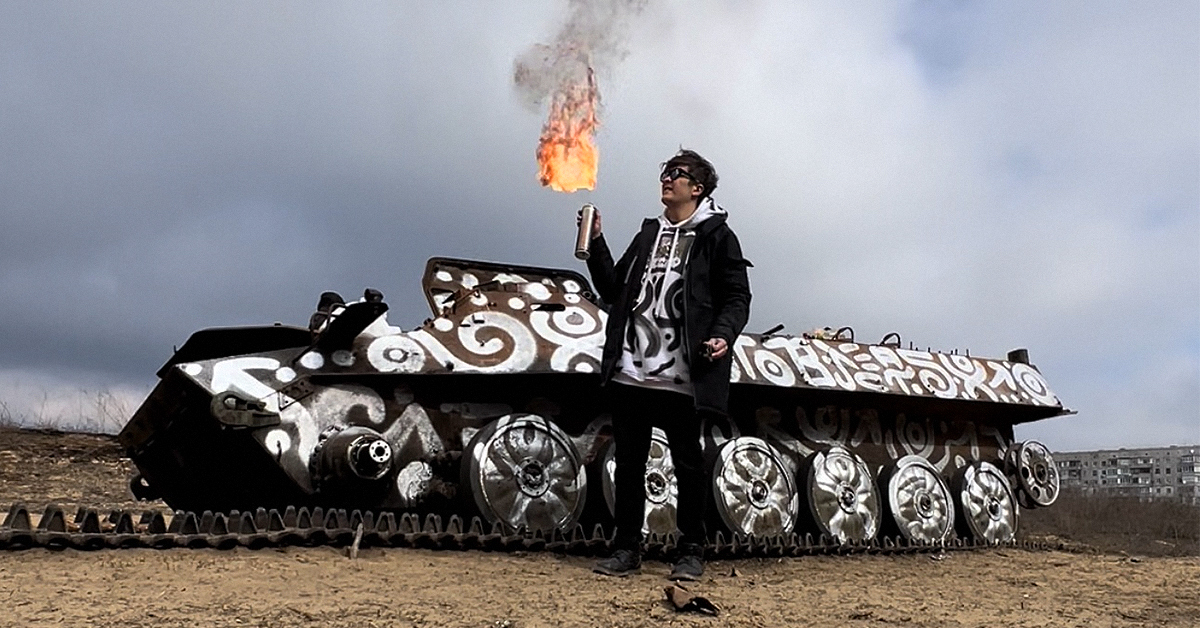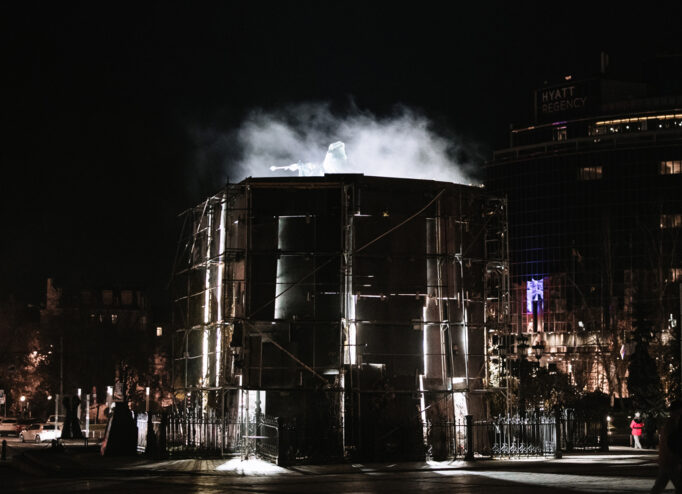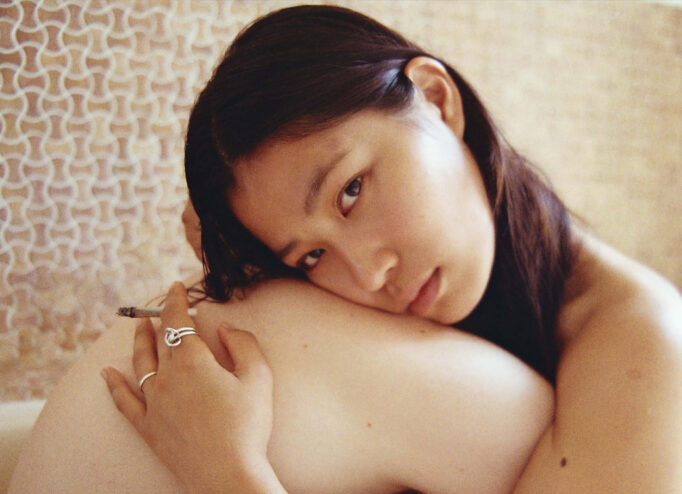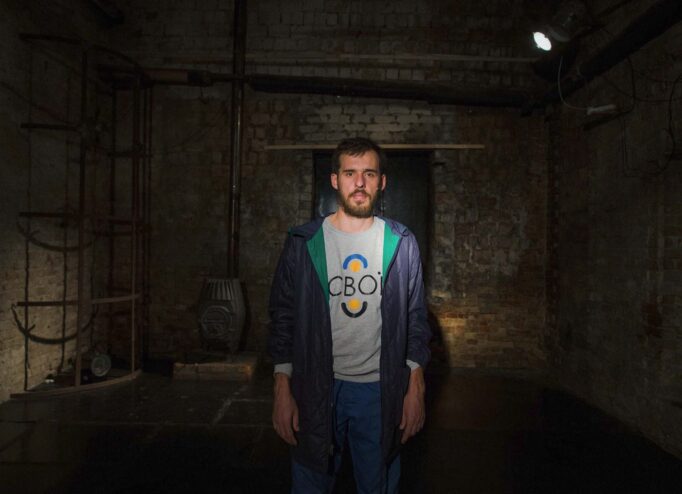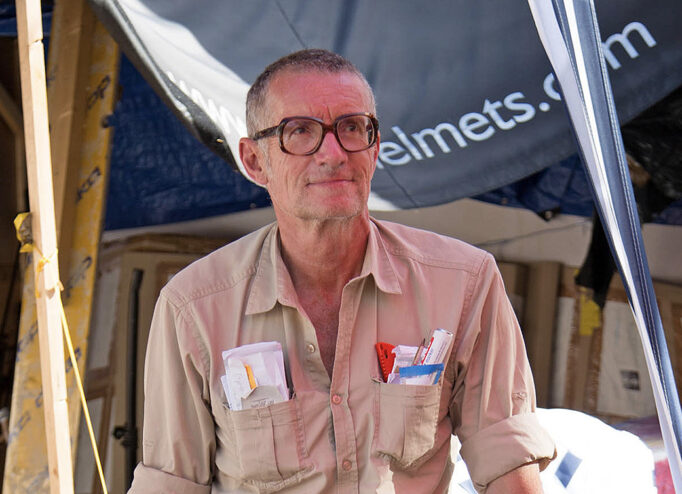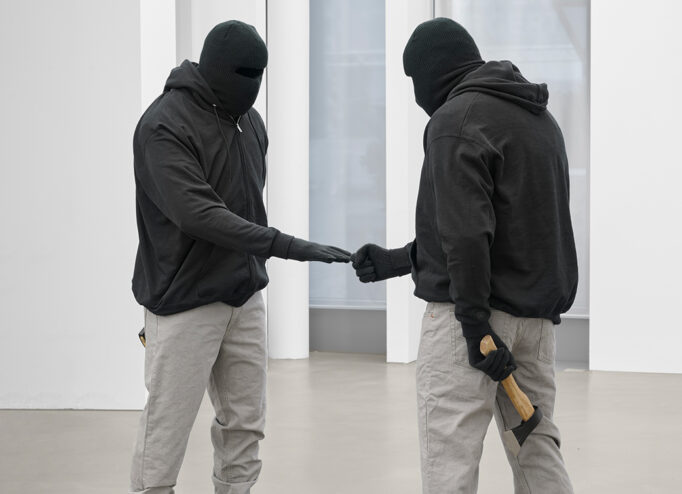Maxym Kilderov has been in the art scene since 2019, and then he called his style «сalligraprimitivе». But now he believes that this direction limits him and he is looking for other planes. He collaborated with GogolFest in 2021, painted seven train cars, a sculpture of Gogol’s head standing on the train station in Kyiv, as well as various locations of the festival in Dnipro and Kherson.
He also painted his clothes with calligraphy: such actions were held at the Kyiv Biennale and exhibitions in Kherson, and Go-A band came to one of their concerts wearing costumes with Maxym’s paintings.
He has toured a dozen Ukrainian cities with his projects, but for the past two months he has been living in Nova Kakhovka, which has been occupied by russia since February 24.
Maxуm has been more of a volunteer than an artist since the war began: as the founder of Humanity, Kilderov actively highlights what is happening through his Instagram.
DTF Magazine called the artist to find out about life in the occupied city, as well as about collaboration with priests, painting enemy IFV, and preparations for an exhibition at the «Lavra» Gallery in Kyiv, or rather about the hope that it will finally take place
ABOUT LIFE IN OCCUPIED KAKHOVKA
— Did you realize that they would occupy Kherson and Nova Kakhovka along with it when the full-scale war began on February 24?
— I didn’t really understand, even in view of the fact that I hadn’t slept the night of the invasion. I did not know how events would unfold, so I went to the safe place and there I managed to sleep for two hours. I fell asleep in Ukraine and woke up in a city with russian flags. I am not very knowledgeable in military matters, so I cannot predict anything about it, and at the time I could not predict anything at all.
— How would you describe the reality of the city?
— I wouldn’t call it dystopia, but you’re walking through town and there’s a man standing by his car, some cigarettes, and a sign next to it that says «There’s also tobacco for sale by weight», and some canned goods. You go further, there are also cars with canned goods, mayonnaise, next to a huge supermarket, where they let two people in, and the guard manually moderates this pass.
You realize that a coffee shop has opened, you can drink coffee there, you start to get excited about little things, because life in the city is paralyzed for a while, and now we know where to buy one thing, and tomorrow it will be another place — and it’s crazy.

— Do you feel that the city is desperate?
— I don’t think the city is wildly desperate, I think the people who are living out their lives here are desperate right now, there’s a huge percentage of the elderly left.
It’s hardest for those who can’t move around normally, to stand in line, these are the people we are helping. I also think that information overload affects everyone, the head is super confused, and then there is the humanitarian disaster.
— People came out to rallies in Berdyansk and Kherson, but there were fewer every day because the occupiers began to disperse people. People also protested in Nova Kakhovka. What are the sentiments in the city now and how have they changed since the start of the war?
— Now it has diminished. I don’t know what this has to do with. But the first rally was very inspiring, and then people come out in separate groups, but not like the first time. I think the main thing is that we showed our mood, saw people and found out who is who in fact, who is not such a patriot, although before beating his chest, but in the end, did not even come to the rally, and who was not such a separatist.
— Did you expect the residents of the Kherson region to resist the russian troops, namely to come out to rallies and stop the military equipment with their bare hands?
— No, I didn’t expect it at all, I thought that putin’s narrative that we would greet them with bread and salt would come true. Although, judging by the cameras, there were women waving to passing convoys near the hydroelectric power plant.
— How many people from your circle have left? And how do you estimate the number of people who left Nova Kakhovka?
— I don’t think there were too many people. Somehow it seems to me that when the panic of the invasion began, but russia had not yet invaded, 5-7 thousand left. We basically had pensioners and some young people left. No one from my circle or any of my close friends left because of the events.
— But people were probably leaving en masse before the war, weren’t they?
— Migration from our city is common because the city is unpromising. Young people understand that they can work for themselves and achieve good success with their talents outside of Nova Kakhovka, but if they are here, they will need to put their lives to make a difference.
I have a friend, Stefan, who is now in Poland and with whom we founded the volunteer organization Humanity, and he also went to Poland to study urbanism. He is gaining experience from the more developed countries and cities in Europe, he transfers this experience here and regularly comes up with proposals, he did the first Urbanism Forum in Nova Kakhovka.
I think our talents should definitely come to town and at least a year to rebuild it all when it’s all over and the big restoration comes.
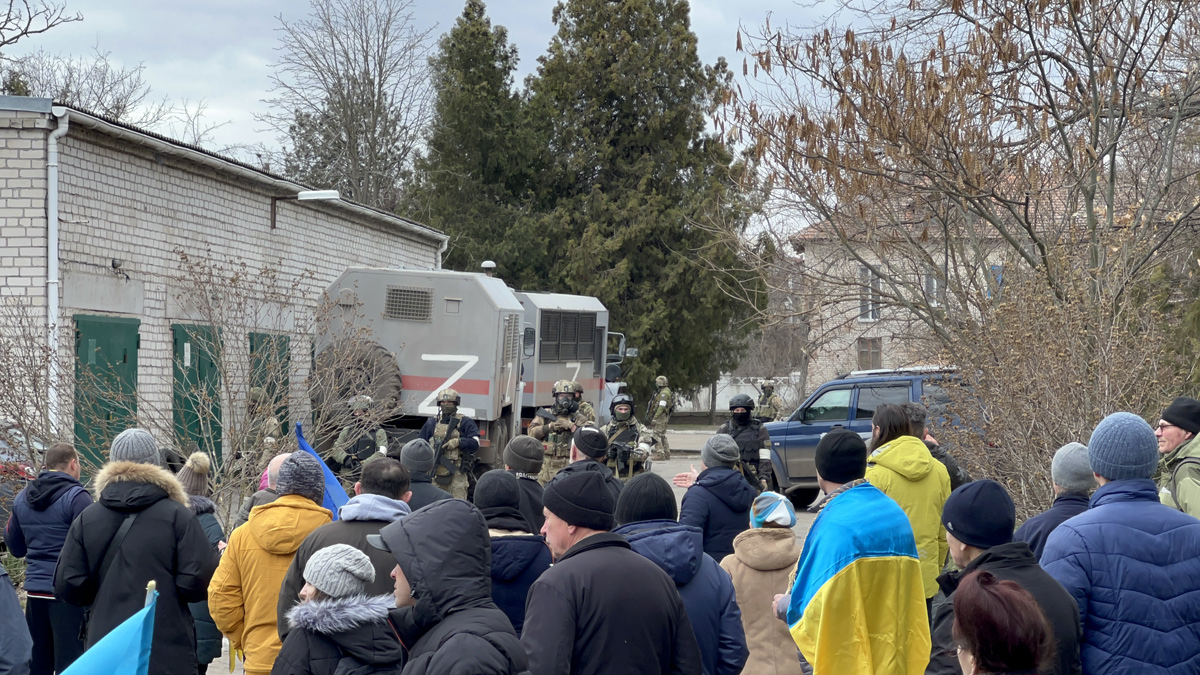
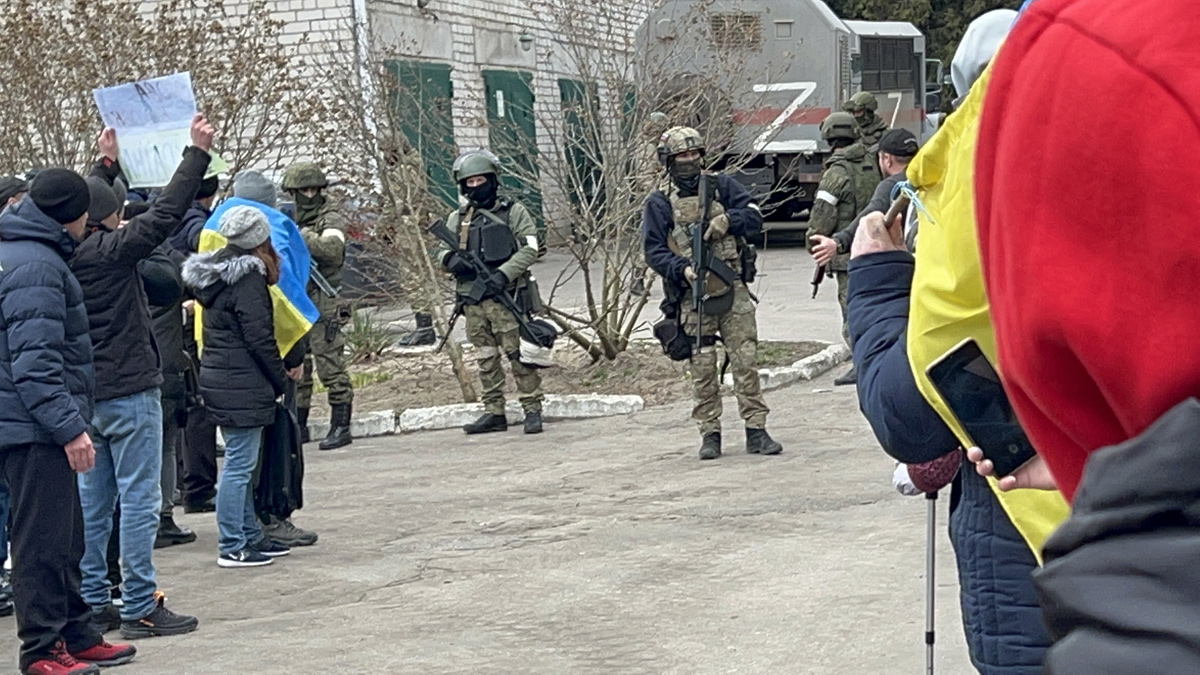
ABOUT VOLUNTEERING
— How did the work of your organization Humanity begin? Who is part of it?
— At first we had more people, about 50 people, many people wanted to participate and applied for participation. But because of a series of events, we began to have rats at different levels who were leaking information.
In the end, we narrowed it down and made a backbone of ten hard working people, but we don’t need any more. It’s all the easier to interact when people trust each other.
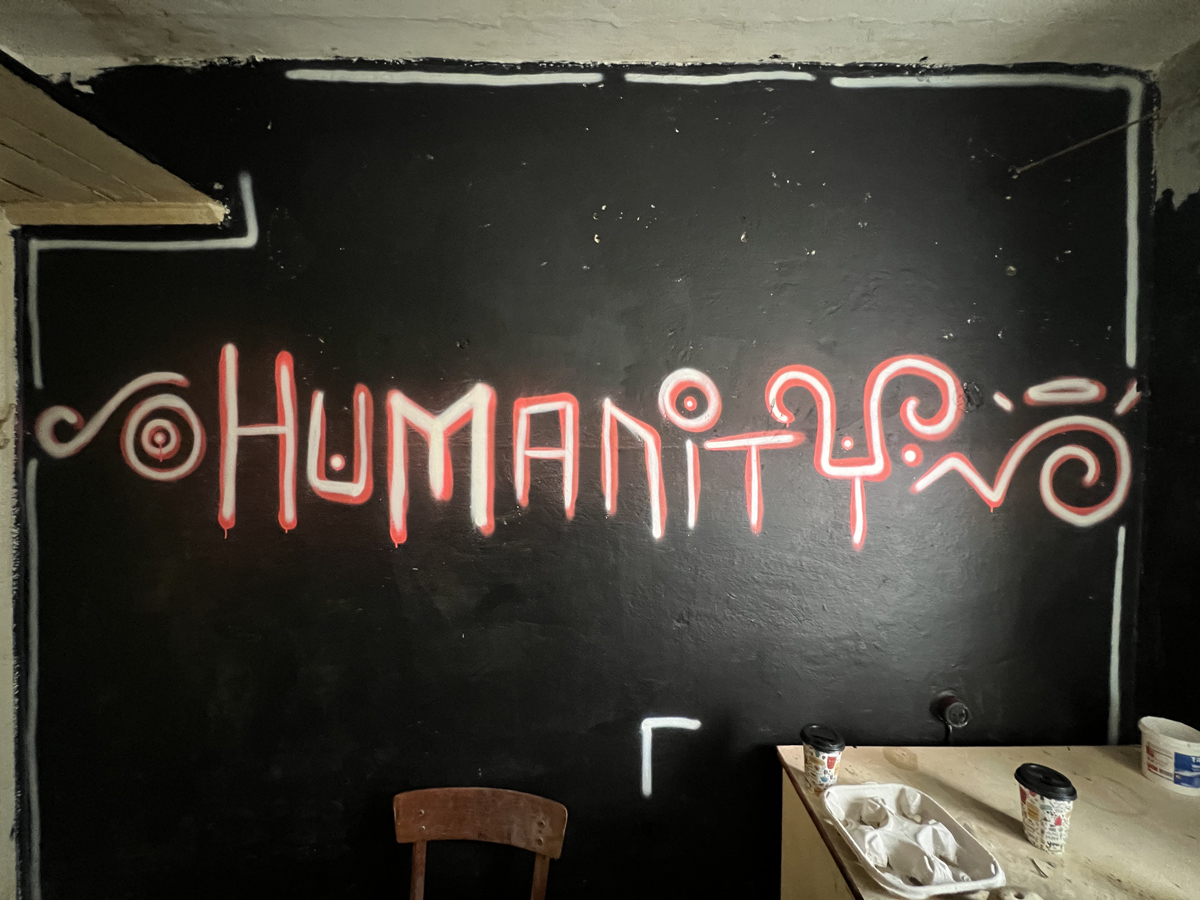
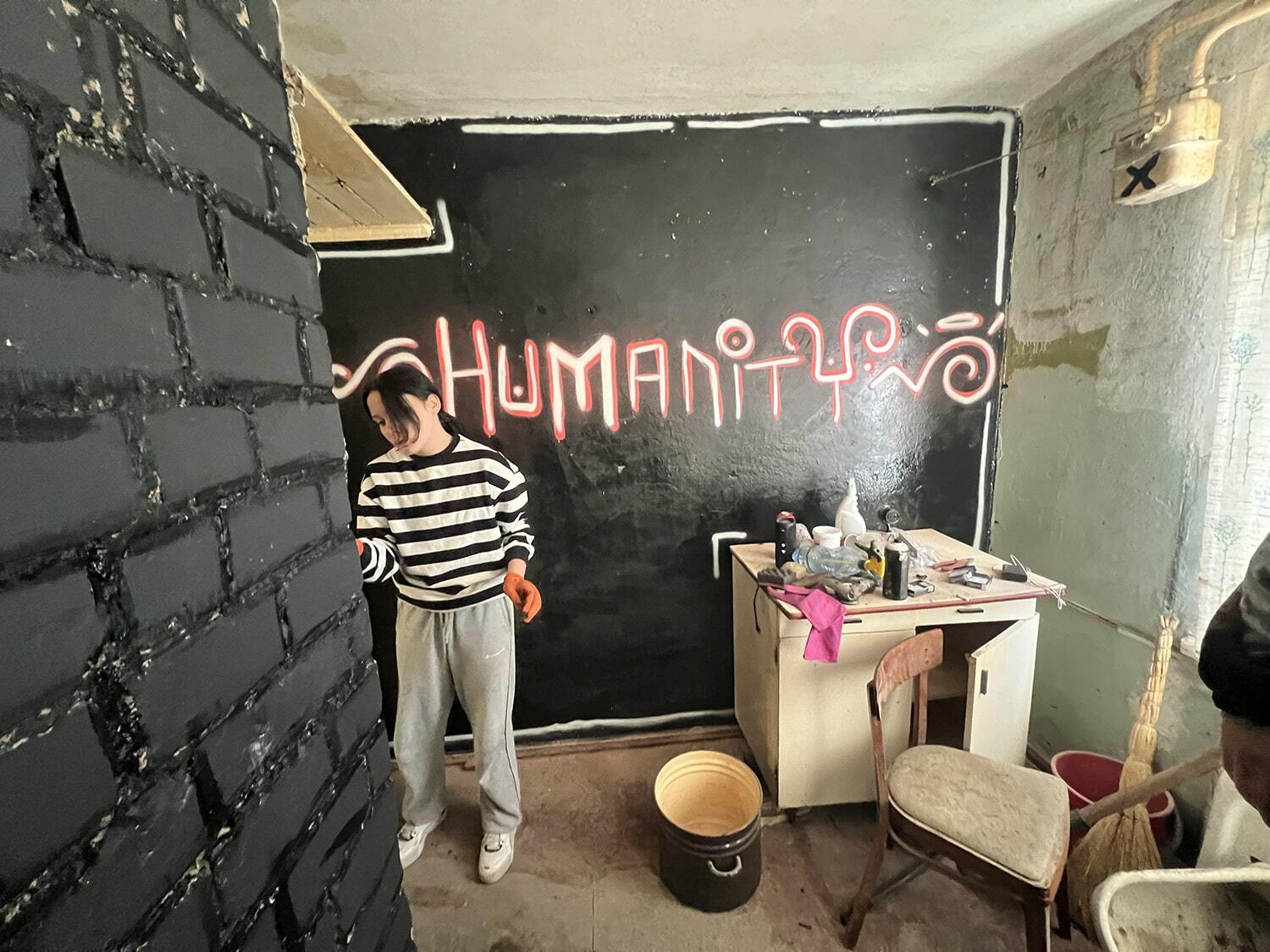
— Why did you decide to take on this with no experience?
— I started covering my events through Insta, and my comrade Stefan through Twitter. Then we realized that we got good traffic on the first or second day, I don’t remember exactly, because it all feels like one long day. We realized that we could help the city and started raising funds for Nova Kakhovka.
The first days were very difficult emotionally, «Grads» were constantly working and there was shelling. The neighboring villages, Kozatskе and Veselе, which are literally across the river from the Kakhovka Hydroelectric Station, were heavily destroyed. So people almost didn’t walk around, everyone was very worried. And we realized that we could try to at least deliver medicine to people.
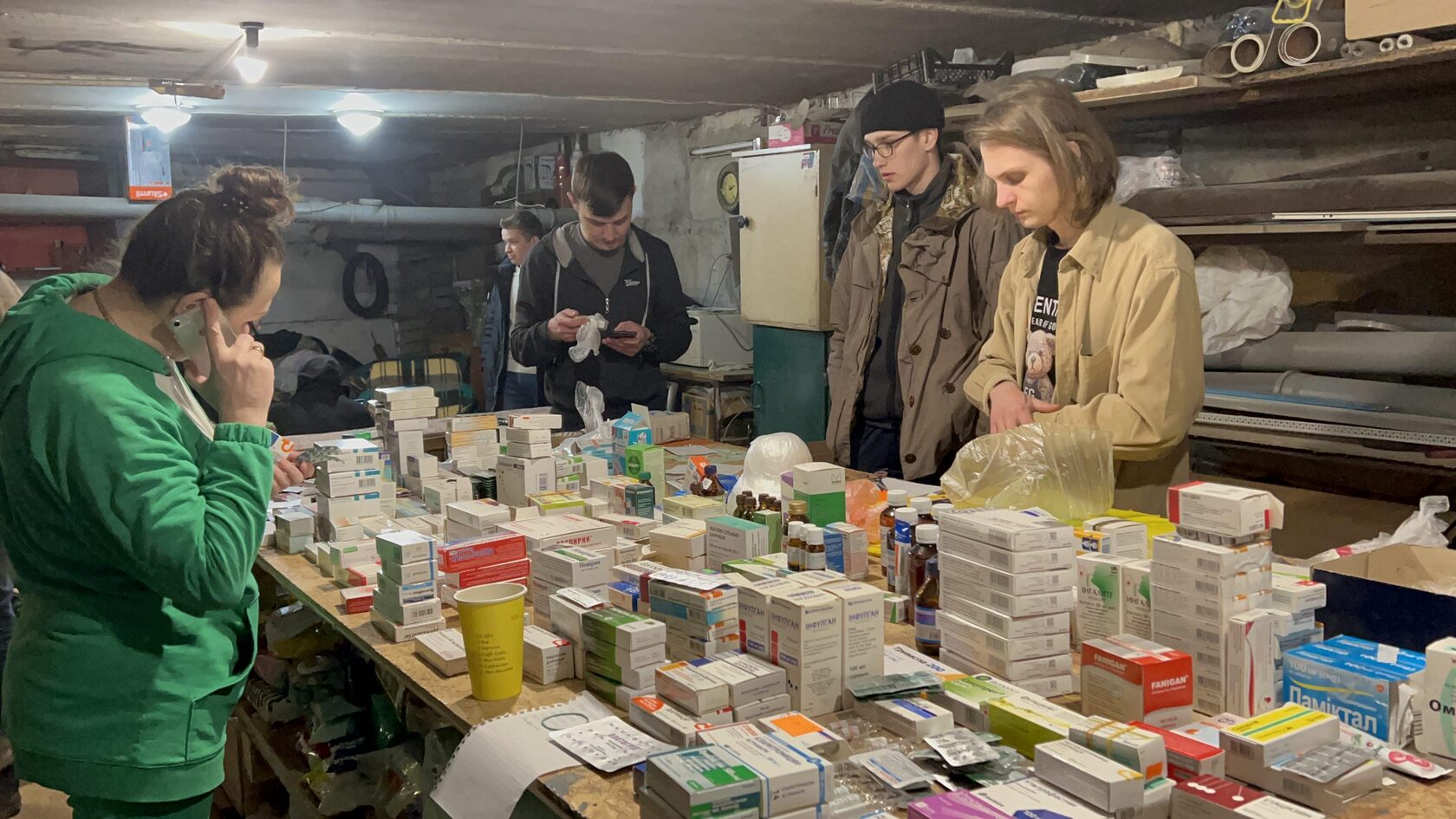
— You cooperate with priests. How did they come into this story?
— I went to St. Andrew’s Church, and I thought that the russians would definitely not shoot at the clergy, they would not discredit themselves like that. I talked to the priests, they liked the idea, and we started delivering medicine and making purchases using their car.
We were able to take the woman to a neighboring city for hemodialysis on the third day of work. If she hadn’t done it within five days, she wouldn’t have survived.
That was the first big challenge, and we did it. Then we realized that we could take on even more ambitious tasks. Now we work with the priests when there are tasks, especially those that involve moving between neighboring towns. We do such collaborations with them.
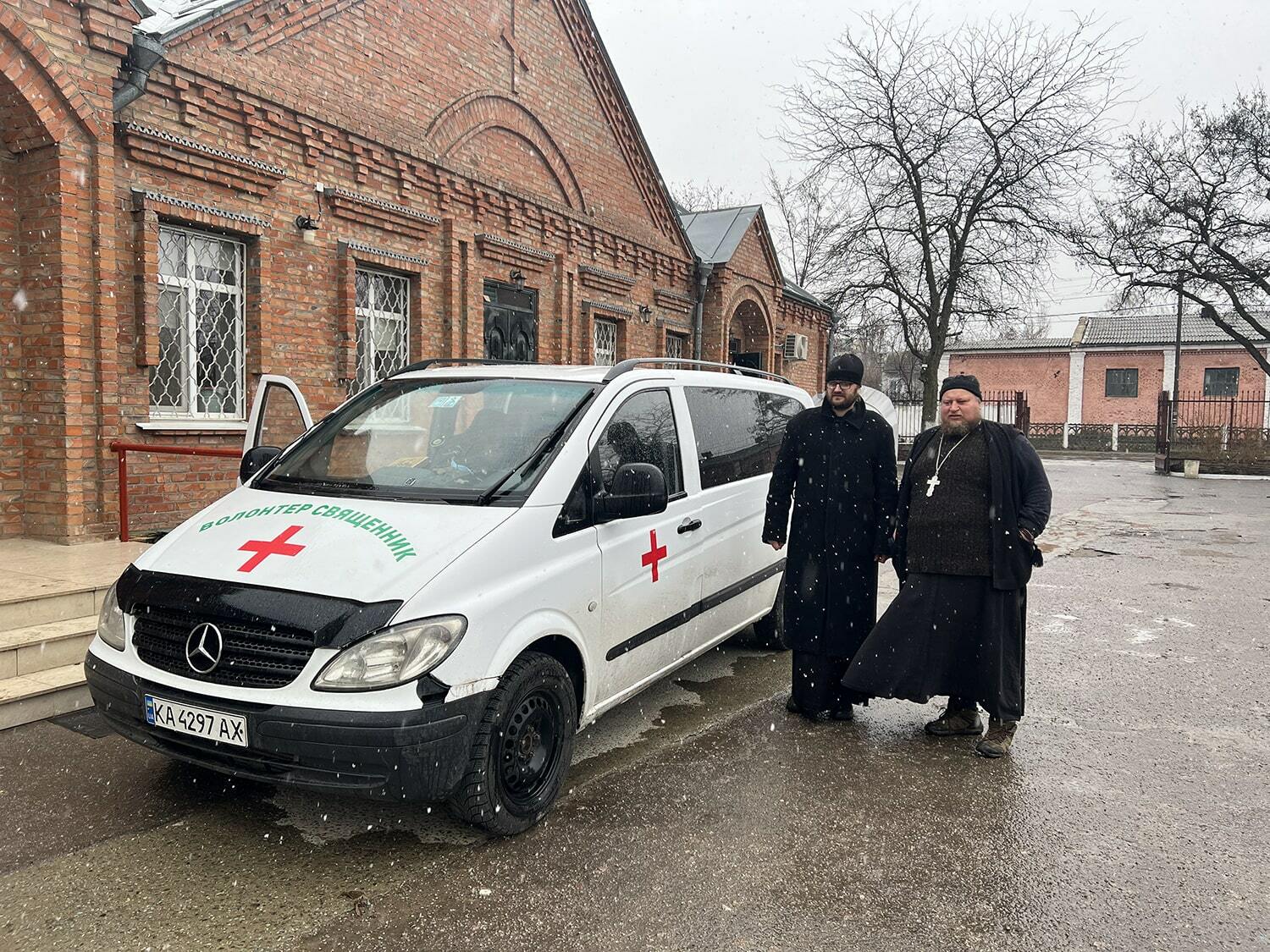
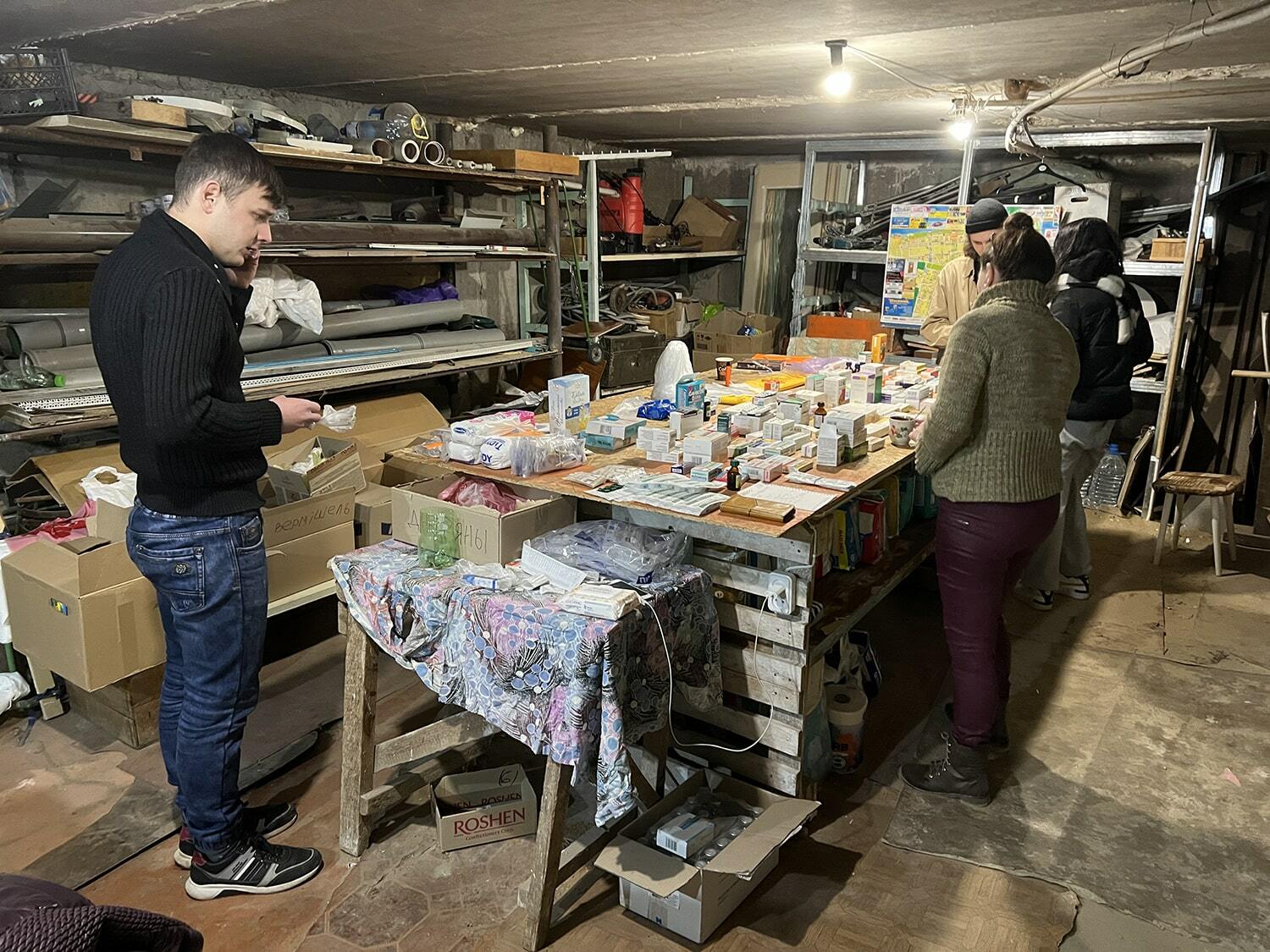
— In spite of all this, there was a wave of hatred about your activities. Why?
— In the first days it was disorganized, there were people who ran into the pharmacy, said they were volunteers, went out of turn and collected medications from long lists. It makes sense that people might not get their medicine.
As a result, we gave up the medicine, we decided to deliver it only to children, and to do humanitarian rations for people with low mobility who needed it. And even when we were no longer delivering medicine, there were still people on Instagram who said in their stories that we were only giving medicine to our own people and «playing gods». But these people don’t know how to critically analyze the situation.
ABOUT ART DURING THE OCCUPATION
— In addition to volunteering, you continue to do art. For example, you painted a tank. Was it a spontaneous story or were you purposefully looking for it?
— When I found out there was an abandoned IFV, which is an infantry vehicle, I knew I wanted to paint it. I want to find new planes, plus there’s a real problem with canvases right now, the stores don’t work. So the most beautiful canvas is an enemy IFV.
We drove up to it, I bombed it in 15 minutes and wrote «Art object as it is». In general, part of the IFV has already been taken apart for metal, there was also a dude who took apart the mechanisms, he will somehow adapt it.
— So a postcard with this image is available in digital format and NFT, right?
— Yes, made an NFT job out of it, and I will give 75% of the proceeds to Humanity to help people.

— Sometimes you go into other artistic practices, let’s say you make a «cake» out of cigarette butts on canvas.
— I’m just bored of doing the same thing all the time and on the same plane. I’m a pastry chef by training, even though I hate cooking and pastry making. I figured it would be fun to do a series on canvases with references to pies and cakes, using different tools. There isn’t any deep meaning or any story here, the high is in the process.
— You say there’s no point, but if you think about it, «Funnel cake» is a Soviet cake, and you made it out of garbage, out of cigarette butts.
— Is that Soviet cake? Oh, shit. Well, we are all scraps of the Soviet Union after all.
— Back to digital art, tell us about the project with Bank of Memories.
— This is our Ukrainian project, which allows you to digitize your memories and transmit a video or recording to yourself in the future. You can make a genealogical tree in it that will store intelligent data, you can transfer crypto to your future self or even not for yourself, but as an inheritance to your child. The guys are just getting started, but a lot of work has already been done, all entirely on their initiative.
I made t-shirts with augmented reality, you can see the embedded video through the app. This toolkit will be used extensively at an exhibition in Kyiv’s «Lavra» Gallery, and I want to make «portals» to other cities. I partly made them, but there’s a fucking war. I will transfer my works from different cities of Ukraine to canvas, and you can see a video through augmented reality about the city where I was and the works I did there.
— Now you’re continuing to prepare for the exhibition in Kyiv, right?
— I began to write more gallery-format large-scale canvases while I have the location. Right now I’m painting a record-size canvas measuring 5×2 meters, I realized that I want to transfer most of what I’m experiencing here now and what Nova Kakhovka is experiencing, and somehow immortalize it, I want to tell the story of Nova Kakhovka through the lens of my rock painting.
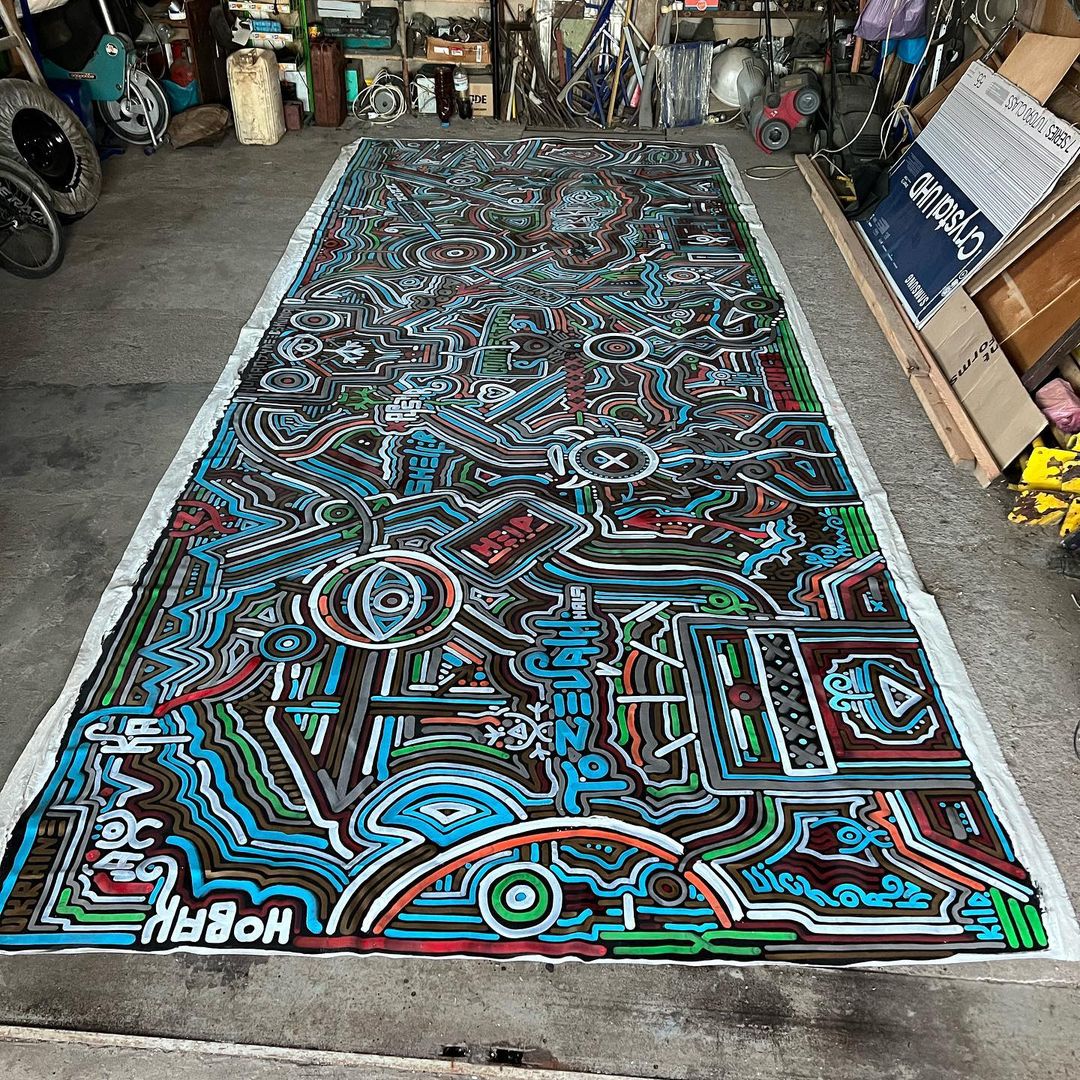
— What was the idea of the exhibition at first?
— I occasionally experiment with miniatures, for example I take a 50×100 canvas, draw out 10×10 centimeter squares with a ruler, then create a composition of frames with each of those squares by hand. I get these miniatures as stickers and then draw inside and intuitively align the color composition. But I’d like to do it in a 5×2 meter format, there would be a thousand of these squares. But now I realize that I don’t know what comes next, as long as I am in the here and now, I have this canvas, this location and I want something to stay from that time.
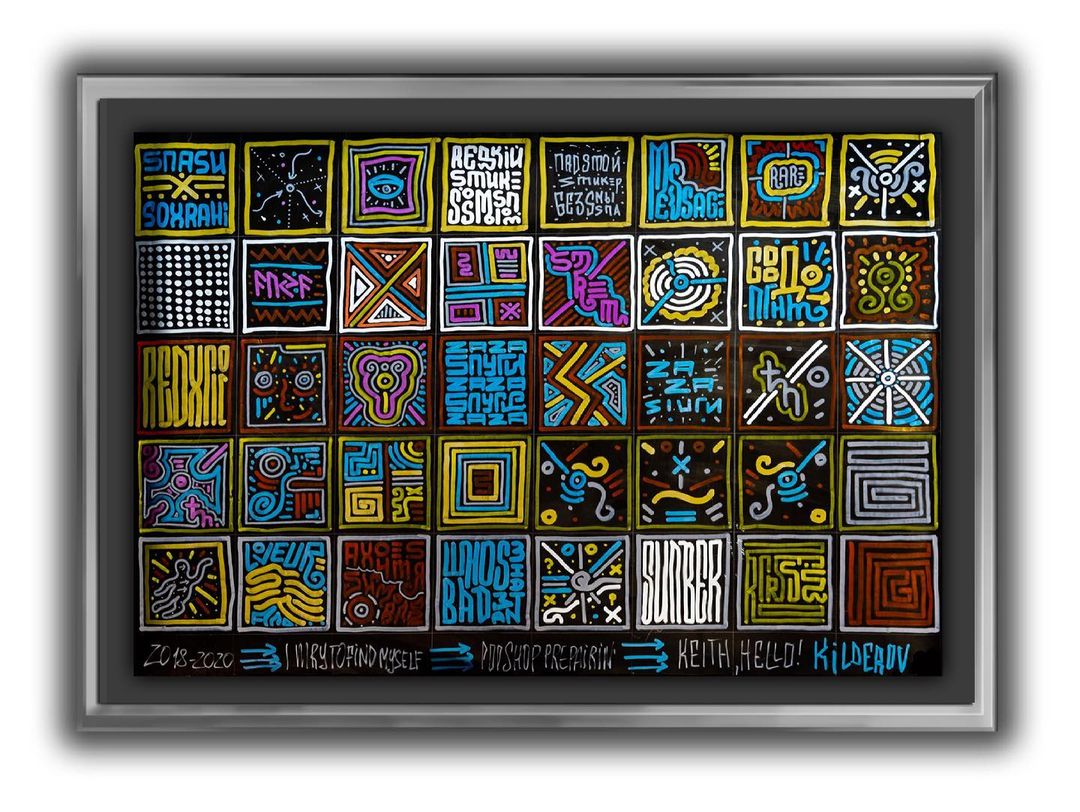
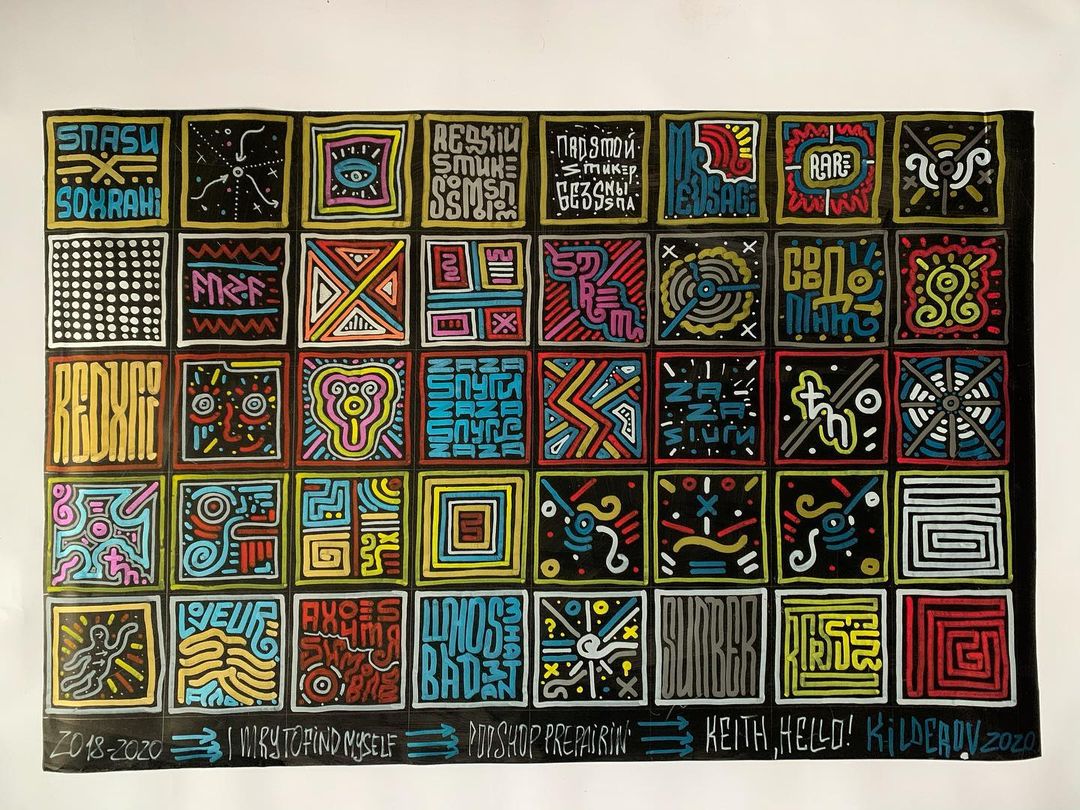
— How do you see the near future of Nova Kakhovka?
— I think that first of all the unity that happened at the rally and the fact that people have become one, as in principle happens in all of Ukraine, will definitely lead to the fact that people will not just live amorphously. They will really unite further in order to develop the city.
I think we need to do a better job and restore the «vyshyvanka» («stone vyshyvanka» is a decorative element on the houses in Nova Kakhovka by Hryhoriy Dovzhenko — note from DTF Magazine), for which our city is known, to paint murals, to invite a bunch of talented artists, to repair the art gallery of Nova Kakhovka.
If we have money left in the accounts of humanitarian support, to direct them to the reconstruction and restoration of the city. In one of the first queue is a stone vyshyvanka, we will actively launch a volunteer movement to restore them, we will continue to work. But they need to attract good funding, so that people insulated the houses from the inside, and not on top of the vyshyvanka, because such precedents have already been.

